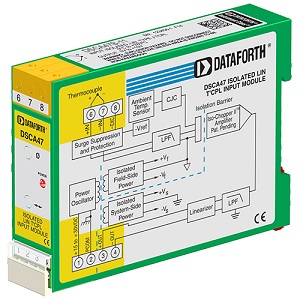|
 August 2018,
MARIETTA, GA ~ August 2018,
MARIETTA, GA ~
Astute system engineers must determine an acceptable error budget associated with their system design and purchase system components with appropriate accuracy specifications. The accuracy specification attributed to an electronic component is the indicator of how much error can be expected in a particular component.
For example, a signal-conditioning component with an error of 1%, means that one can expect this unit to read 99% to 1.01% accurately; whereas, a 0.05% accuracy specifications means the unit reads 99.95% to 1.0005% accurately. Too often, the combinational effects of "accuracy specifications" are overlooked.
For example, consider the following two cases.
- Two modules in series each with 0.02% accuracy used to read one signal will result in a combined accuracy specification of 0.04%, [(0.998)*(0.998) = 0.996].
- Three variables are measured with 0.05% accurate modules and used in the computation V1 / (V2*V3), which has a worst-case accuracy of 0.15%, [0.9995/(1.0005*1.0005)].
Clearly, the interconnecting topology...
To read the
complete Tech Note, please
click here.
|



